Op 3 januari werd de Iraanse generaal Qassem Soleimani met een moordaanslag om het leven gebracht, met het gevolg dat het Midden-Oosten, nu al geplaagd door oorlogen en opstanden, nog onrustiger is geworden. De Amerikaanse president Donald Trump beloofde in reactie op Iraanse aanvallen die daarna volgden, mogelijk 52 locaties in het land te bombarderen, waaronder zelfs cultureel erfgoed. Hij trok dit later weer in, maar evenwel blijft de kans op oorlog zeer wel aanwezig. Dr. Alexander Wolfheze heeft langdurig studie gedaan naar de cultuurgeschiedenis van het Nabije Oosten, wat ook Iran omvat. Kort geleden is zijn nieuwste boek met traditionalistische opstellen Alba Rosa in het Nederlands vertaald en bij Uitgeverij Arktos uitgebracht. ReactNieuws heeft hem enkele vragen voorgelegd.
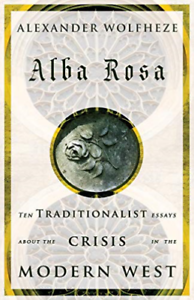 Het lijkt erop dat de Iraniërs over een sterke mentaliteit beschikken om met een wereldmacht de confrontatie op te zoeken. Is hiervoor een historische verklaring?
Het lijkt erop dat de Iraniërs over een sterke mentaliteit beschikken om met een wereldmacht de confrontatie op te zoeken. Is hiervoor een historische verklaring?
Ook als de lezer een snel en kort antwoord zou willen, is hier toch wel een kleine historische inleiding nodig. Door ons slechte onderwijs en onze bevooroordeelde systeempers zijn veel mensen heel slecht geïnformeerd over de wereld om hen heen – daarmee is het publiek voor onze vijandelijke elite gemakkelijk te manipuleren. ‘Iran’ is in de ogen van veel mensen nu een soort barbaars ‘verweggistan’: één van de vele primitieve oorden in het Midden-Oosten die – naar ‘populistisch’ verluidt – worden bewoond door half-analfabete, lijfstraf-minnende inteelt-populaties en bestuurd door fanaat-onredelijke, hondsdol-antiwesterse godsdienstfanaten. Het is belangrijk heel wat kanttekeningen te plaatsen bij die simplistische kijk. Het komt onze vijandelijke elite maar al te goed uit dat de gemiddelde burger niet veel verder komt dan zulke vooroordelen.
Het woord ‘Iran’, etymologisch ‘(het land) van de Ariërs’, mag dan deel uitmaken van de officiële naam van de huidige ‘Islamitische Republiek Iran’, maar is pas sinds 1935 de gangbare en pas sinds 1979 de enig-officiële naam van een staat die tot dan toe in het Westen werd aangeduid als ‘Perzië’. Het is ook pas sinds 1979 dat die staat een republiek is – voor die tijd was er een Perzische Keizerrijk. Nog de laatste keizer, Mohammad Reza Pahlavi (r. 1941-1979), droeg de titels Shahanshah ‘Koning der Koningen’ en Aryamehr ‘Licht der Ariërs’ – beide gaan terug op een meer dan twee en half millennia oude rijksgedachte en staatstraditie. In het Westen werden deze staat en deze traditie, dragers van een luisterrijke en hoogstaande cultuur, aangeduid als ‘Perzisch’. Dat woord verwijst oorspronkelijk naar het oude hart van staat en traditie, namelijk de provincie Fars, gelegen in het zuidwesten van de huidige Islamitische Republiek – de relatie van ‘Perzisch’ tot ‘Iraans’ is in die zin te vergelijken met die tussen ‘Hollands’ en ‘Nederlands’. De Republiek der Zeven Verenigde Nederlanden had, via de Verenigde Oost-Indische Compagnie en gezantschappen, al goede en respectvolle betrekkingen met het Perzische Rijk, gebaseerd op neutraliteit en handel. De Perzische cultuur en taal waren in die tijd nog dominant in grote delen van de Oude Wereld, van de Balkan en Noord-Afrika (het Ottomaanse Rijk) tot in India (het Mogol Rijk) – zelfs in het 19e-eeuws Nederlands-Indië lazen en spraken veel geleerden en gezagsdragers nog Perzisch. De grootse literatuur en prachtige kunst van Perzië werden in Nederland, net als in de rest van Europa, uitgebreid bestudeerd en bewonderd. Perzië was in de beleving van gewone mensen toen nog een sprookjesland van magische tapijten, paradijstuinen en mystieke dichters. Pas sinds de Islamitische Revolutie van 1979 is er verandering gekomen in die waarneming – met de teloorgang van de oude naam ‘Perzisch’ verdwenen ook veel kennis, begrip en respect voor een hele oude en hoge cultuur.
Deze kleine inleiding geeft meteen een goede verbinding naar de historische verklaring waarom wordt gevraagd: de Perzische – of zo men wil Iraanse – geschiedenis verklaart veel van de basale houding van het huidige Iraanse bewind naar het buitenland. Het Iraanse bewind bestaat niet, zoals Westerse regeringen, uit globalistische loopjongens van het geschiedenisloze grootkapitaal en de waardevrije verlichtingsideologie: het Iraanse bewind ziet zichzelf als de trotse drager van een zeer hoge historische roeping en van een zeer oude nationale traditie. Die roeping en traditie vallen nu samen in een zeer speciale – en deels zeer Perzische – variant van de Islam: het Sjiisme (van het Arabische Sji’at Ali, ‘Partij van Ali’ – zij die Imam Ali en zijn nageslacht accepteren als opvolgers van de Profeet Mohammed). Die variant legt de nadruk op eschatologisch visie en messiaanse roeping, een nadruk die zich – soms heel subtiel en soms heel direct – uit in wat men in het Westen vroeger kende als ‘kruisvaarders’ roeping: een geleefd geloof en een levenshouding waarin discipline, strijdvaardigheid en zelfopoffering centraal staan. In de Nederlandse geschiedenis kunnen we dat soort uitingen ook zien, zoals in de Tachtigjarige Oorlog – die behalve onafhankelijkheidsoorlog ook godsdienstoorlog was – en in de Tweede Wereld Oorlog, waarin essentieel geleefde levensvisies bitter op elkaar botsten. De passie van de Engeland-vaarder enerzijds en die van de Waffen SS-vrijwilliger anderzijds. Die passie ligt dicht aan de oppervlakte van het Iraanse nationale leven – en wordt alleen maar versterkt door de constante bedreiging van de Amerikaanse vijand. Men herinnert zich daar nog dagelijks de miljoen slachtoffers van de bijna achtjaar durende oorlog tegen Saddam Hoessein (de Iran-Irak Oorlog van 1981-1988) – een oorlog die men, niet ten onrechte, ziet als een Amerikaanse poging om de Iraanse Revolutie dood te bloeden. Men ziet daar ook de constante Amerikaanse inmenging in binnenlandse politiek: via regionale afscheidingsbewegingen (vnl. in Baloechistan, Choezestan, Koerdistan), herhaaldelijke terreuraanslagen (m.n. de Volksmoedjahidien), economische sancties en propaganda hetzes. De combinatie van een gepassioneerde levenshouding en een sterk nationaal bewustzijn die de Iraanse politiek aanstuurt mag voor de gemiddelde moderne Westerse mens moeilijk navolgbaar zijn, maar is daarom niet minder authentiek en effectief.
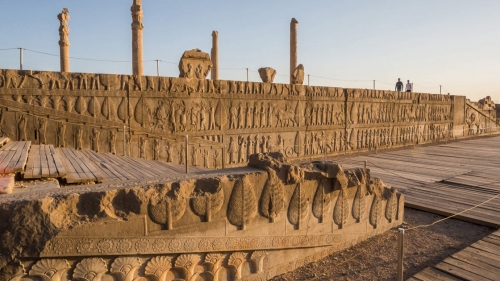
In die zin is de Iraanse confrontatie met de hegemoniale Amerikaanse wereldmacht zo goed als onvermijdbaar: het Iraanse vasthouden van de eigen (staats)soevereine rechten en de eigen (meta)historische roeping – een vasthouden dat parallellen vindt in de onafhankelijke geopolitiek van Rusland, China en nog een klein aantal andere landen – is eenvoudigweg onverenigbaar met de agressieve globalistische politiek die nu wordt gevoerd door de mondiale vijandelijke elite en die zich nu via deep state structuren heeft meester gemaakt van het Amerikaanse staatsapparaat. De Belgische publicist Robert Steuckers heeft de via Amerikaanse hard power en soft power geïmplementeerde en in neo-liberale en cultuur-marxistische ideologie verankerde globalistische politiek van de mondiale vijandelijke elite sinds zeer treffend geduid als ‘pyro-politiek’. Het is de politiek van het met alle mogelijke middelen ‘weg- en neerbranden’ van alle alternatieve machtscentra, -structuren en -ideeën. Voorbeelden van verschillende pyro-politieke tactieken: het (versneld neo-liberale) ‘rampen-kapitalisme’ in het voormalige Oostblok in de jaren ’90, de (black op) ‘kleuren-revoluties’ in de voormalige Sovjet-sfeer in de jaren ’00 en de ‘Arabische lente beweging’ in het Midden-Oosten in de jaren ’10. Er blijven echter een aantal alternatieve machtspolen over buiten de ‘uni-polaire’ globalistische ‘Nieuwe Wereld Orde’ die is ontstaan sinds de ondergang van de Sovjet-Unie: bovenal China en Rusland. Ook Iran is nog altijd een authentieke soevereine staat, maar als middelgroot land is Iran echter veel kwetsbaarder dan de grootmachten China en Rusland. In confrontatie met de op de Amerikaanse supermacht steunende globalistische ‘greep naar de wereldmacht’ is er maar één echte garantie van staatssoevereiniteit, namelijk een geloofwaardige nucleaire afschrikking. Ben Goerion en De Gaulle begrepen dit principe en gaven daarmee Israël en Frankrijk de optie van een authentiek soevereine geopolitieke koers. De Klerk en Gaddafi lieten zich ervan afleiden en beroofden daarmee Zuid-Afrika en Libië van een overlevingskans in de globalistische leeuwenkuil. Vandaar het heikele probleem van het Iraanse nucleaire programma. Totdat Iran zich een ‘nucleaire optie’ verschaft hangt het overleven van Iran als soevereine staat af van een instabiele combinatie van zeer variabele factoren. Bijvoorbeeld van de vraag in hoeverre President Trump in staat is de deep state provocaties en manipulaties die gericht zijn op oorlog te neutraliseren. En uiteindelijk ook van de vraag op welk punt – en hoe – Rusland zal ingrijpen wanneer de integriteit en stabiliteit van de Iraanse staat in het geding is.
De Amerikaanse president Donald Trump sprak vrijuit over het bombarderen van plekken met cultureel erfgoed, waar moeten wij dan aan denken?
Dit soort bedekte bedreigingen passen goed in de globalistische strategie van ‘totale oorlog’ – van de pyro-politiek waarover we eerder spraken. Het is belangrijk duidelijk te zijn: de inzet van het globalisme is de wereldmacht en de globalistische vijandelijke elite is dus potentieel in staat van oorlog met de hele wereld, namelijk met alles wat haar macht – al is het maar in theorie – bedreigt. De globalistische vijandelijke elite kent geen grenzen en voelt zich evenzeer bedreigt door ‘binnenlandse’ als door ‘buitenlandse’ tegenkrachten: voor haar is een onafhankelijk opererende President Trump even gevaarlijk als een onafhankelijk opererende Iraanse staat. En niets komt haar beter uit dan dat die beiden elkaar vernietigen – dat is de inzet van de Amerikaanse deep state en de mondiale systeemmedia. De oorlog die de globalistische vijandelijke elite voert is ook maar heel beperkt ‘klassiek militair’. Pyro-politieke oorlogsvoering berust namelijk niet slechts op het ‘opbranden’ van de militaire en economische capaciteit van de vijand, maar vooral ook op het ‘wegbranden’ de identiteit en het moreel van de vijand. De identiteit van een volk en een natie bestaat in ruimte en tijd – ze altijd hangt samen bepaalde ‘heilige’ plaatsen en bepaalde historische ‘sleutelmomenten’. Door volken en naties in die plaatsen en momenten te treffen, kan hun identiteit gemanipuleerd worden. Vandaar dat de globalistische vijandelijke elite, natuurlijk via proxies, steeds specifieke symbolische doelwitten kiest. Op 9 september 2001 waren dat de hoogste wolkenkrabbers van New York en op 15 april 2019 was dat de Notre Dame de Paris. De Afghaanse Taliban en Arabische Da’esh terreurbewegingen, beide heimelijk opgezet via Westerse geheime diensten en gefinancierd door de Golfstaten, richtten zich op soortgelijke wijze tegen grote pre-Islamistische monumenten als Bamiyan en Palmyra. Het is dus logisch dat een Amerikaanse oorlogsinzet tegen Iran zich met name ook zou richten op het ‘in de as leggen’ van identiteits-bepalende Iraanse monumenten.
Mocht het toch tot oorlog komen, of zelfs een Amerikaanse invasie, wat gevolgen kan dit dan hebben voor dit cultureel erfgoed?
De vernietiging van ‘vastgoed’ cultuurgoed en de roof van ‘draagbaar’ erfgoed was ook onderdeel van globalistische oorlogen tegen Irak en Syrië – monumenten werden opgeblazen en musea leeggeroofd. Veel van de Assyrische kunstwerken in Nimrod zijn zo verloren gegaan en veel van de spijkerschrift kleitabletten uit het Baghdad Museum zijn zo via de zwarte markt verdwenen in privé-verzamelingen. De rijkdommen van Iran kan een soortgelijk lot beschoren zijn: de paradijstuinen van Shiraz, de moskeeën van Esfahan en de schatkamers van Teheran behoren tot de grootste scheppingen van de mensheid maar voor de globalistische vijandelijke elite zijn het niet meer dan wegwerpartikelen. Vergeet niet dat dit de vijandschap van deze elite zich richt tegen alles wat mooier, beter en hoger is dan zijzelf – en dus tegen bijna alles in deze wereld. De globalistische inzet op de vernietiging van cultureel erfgoed vooral een lange termijnstrategie: het gaat erom de identiteit van een volk en natie op lange termijn te manipuleren door de cultuur-overdracht te verstoren. De geallieerde terreurbombardementen op de As-mogendheden gedurende Tweede Wereld Oorlog geven een indicatie van de richting waarin men daarbij moet denken: het systematisch platleggen van vrijwel alle Duitse steden en het nucleair verdampen van Hirosjima en Nagasaki resulteerden in een collectieve traumatische stress stoornis in de Duitse en Japanse psyche. Na de Stunde Null ervaring van 1945 – de ervaring van een fysieke totaal-verwoesting en psychische ‘vijandelijke overname’ – viel er bijna letterlijk een ‘gat’ in het collectieve historisch geheugen van beide volkeren. Het is dit ‘zwarte gat’ in de geschiedenis – feitelijk een geforceerde collectieve identiteitscrisis – dat hun naoorlogse hersenspoeling mogelijk maakte. Dat deze strategie ook echt werkt wordt bewezen door het feit dat beide landen – dit jaar driekwart eeuw later – nog steeds gewillig in het gareel van de overwinnaar lopen: beide landen hebben nog steeds een Amerikaans militair garnizoen en schikken zich vooralsnog zonder noemenswaardige weerstand naar de globalistische politiek die door de Amerikaanse politieke elite wordt gedicteerd, hoe onlogisch en zelfvernietigend die politiek ook moge zijn. Met Japan staat er iets beter voor omdat het tenminste één soeverein symbool behield: de keizerlijke dynastieke continuïteit. Met Duitsland is het veel slechter gesteld: daar is nu sprake van authentieke zelfhaat – Bondskanselier Merkel’s ‘migratiebeleid’ sluit naadloos aan op die realiteit. Als de globalistische vijandelijke elite Iran in geopolitieke zin daadwerkelijk wil neutraliseren dan is een soortgelijke ‘behandeling’ als die van Japan en Duitsland het meest effectief: de eerste stap is het fysiek aantasten van cultureel erfgoed. Het beoogde effect is daarbij dus een lang termijneffect. Op de korte termijn zal de vernietiging van cultureel erfgoed het Iraanse volk zo verontwaardigd en woedend maken dat de weerstand tegen de Amerikaanse agressie in hoge mate wordt versterkt en in uiterst fanatisme doorslaat – net als het geval was bij de As-mogendheden gedurende de laatste maanden van de Tweede Wereld Oorlog. Die verhoogde inzet bepaald ook de drastische uitkomst. De uiteindelijke uitkomst van een dergelijke ‘totale oorlog’ is echter moeilijk te voorspellen: zij zal men name afhangen van de escalatie-bereidheid van de globalistische strategen – en van de risico-bereidheid van hun Russische tegenspelers.
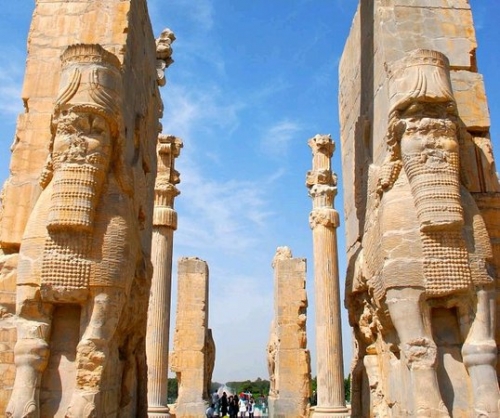
En hier komen we op een interessant vraagstuk: in hoeverre is de door de deep state gebezigde oorlogsretoriek reëel? Er is anno 2020 sprake van een duidelijke Amerikaanse imperial overreach: de militaire en financiële grenzen van de Amerikaanse macht zijn bereikt. Een echte globalistische overwinning op Iran is slechts mogelijk met grootschalige Amerikaanse militaire inzet: grondinvasie gevolgd door bezettingsgarnizoen. Zo’n overwinning is niet te bereiken door de inzet van lokale proxy groepen – dit is bewezen in Irak en Syrië. Een totale grondoorlog en een langdurige bezetting zouden veel van Amerika vergen: veel levens en veel geld. De politieke wil en brede ondersteuning lijken vooralsnog volledig te ontbreken; de daadwerkelijke belanghebbenden – het military industrial complex en buitenlandse lobby’s – zouden een enscenering van het niveau ‘Pearl Harbor’ of ‘9/11’ nodig hebben om voldoende binnenlandse steun te krijgen voor een grootschalige oorlog tegen Iran. Er is dus waarschijnlijk sprake van een bepaalde mate van ‘blufpoker’, wellicht bedoeld ter verhoging van de inzet bij toekomstige regionale diplomatieke initiatieven. Wat echter niet is uit te sluiten is een – al dan niet door deep state fracties bewerkstelligd – ‘incident’, gevolgd door een ‘per ongeluk’ oorlog.
Wat is onze, dus de Indo-Europese, verwantschap met Iran? Gaat dit enkel over de taal?
Historische verwantschap bestaat op verschillende niveau’s – van zeer abstracte kosmologie (mythologische symbolen en religieuze concepten) tot aan zeer concrete biologie (haplogroepen en fenotypes). Nu is biologische verwantschap op welk niveau dan ook, laat staan op het groepsniveau van etnische identiteit, natuurlijk zo goed als een taboe onderwerp in het huidige ‘politiek-correcte’ discours van de cultuur-nihilistische systeemmedia en systeemacademie – het blijft niettemin een realiteit. De cultuur-nihilistische deconstructie van elke soort authentieke groepsidentiteit is een belangrijk streven van de globalistische vijandelijke elite. Hiermee is een realistische discussie van genetische, epigenetische en fenotypische ontwikkeling en identiteit op niveau van etniciteit in de Westerse publieke sfeer bijna onmogelijk. Het gaat natuurlijk om wetenschappelijke materie met uiterste complexe aspecten, maar dat wil niet zeggen dat het biologische aspect van etniciteit zomaar van tafel kan worden geveegd. Het is verstandig met respect te kijken naar het historisch overgeleverde gegeven van etnische identiteit – en om volksidentiteiten als deel van de menselijke biologische variëteit te beschermen tegen de intrinsiek nivellerende en diep-ecocidale richting van het globalisme. In de Iraanse en Indische cultuursfeer denkt men overigens veel positiever en realistische over de eigen Indo-Europese oorsprong en identiteit dan in Europa.
Nu is ‘Indo-Europees’ in de eerste plaats een taalkundige uitdrukking, de Indo-Europese volkerengemeenschap – die al prehistorische tijd uitstrekte van de Europese Atlantische kust tot aan de Golf van Bengalen – heeft echter ook een bepaalde mate van culturele samenhang. Het is daarbij belangrijk op te merken dat ook godsdienst zich bij de Indo-Europese volkeren steeds minstens net zoveel aanpast aan de volksaard, als de volksaard aan de godsdienst. De typisch eigen leef- en gedachtewereld – door de Duitse filosoof Heidegger zeer treffend beschreven als Haus des Seins – van de Indo-Europese volkeren drukt steeds duidelijk een stempel op de niet-Indo-Europese godsdiensten waartoe zij voor een groot deel zijn overgegaan. Dat geldt voor het Europese Christendom evenzeer als de Iraanse Islam. De in Iran dominante Sji’a Islam en de daar sterk mee verweven Soefi Traditie wijken beide sterk af van in de Arabische wereld dominante Soenni Islam – en al helemaal van de neo-primitieve ‘Islam’ die wordt uitgedragen door de Wahhabitische puristen van het Arabisch schiereiland en die wordt uitgedragen door groepen als Al-Qaeda en Da’esh. Zo ligt in het Sjiisme een sterke nadruk op hiërarchische kosmologie – een typisch Indo-Europese gegeven. En zo is er in het Sji’a Islam een institutionele religieuze hiërarchie die ontbreekt in de Soenni Islam. Er is daarnaast ook een aansluiting op het oude Indo-Europese instituut van vererfbaar priester-koningschap: het Sjiisme kent de institutie van het Imamaat: de opvolgingslijn vanuit Imam Ali, de schoonzoon van de Profeet. Deze lijn heeft zelfs een legitieme claim op het hoogste wereldlijk gezag over het Perzische Rijk via het huwelijk van Imam Hossein, de tweede zoon van Imam Ali, met Shahr Banoe, de dochter van de laatste Sassanidische keizer Yazdegard III. Andere relevante elementen zijn het Sjiitisch juridisch beginsel van de Ijtihad – de onafhankelijke rede als bron van jurisprudentie – en de binnen het Sjiisme dominante afkeur van elke vorm van polygamie. Bovenal is er echter het feitelijk – geleefde – overleven van veel Zoroastrianistische cultuurelementen: kalender, feestdagen, rituelen. Het Zoroastrisme – dat in Iran ook nog een echte institutionele presentie heeft – is, net als het Vedisch Hindoeïsme, een authentieke Indo-Europese godsdienst.
Iran is daarmee, ondanks aanzienlijke materiële en culturele verschillen, duidelijk deel van de Indo-Europese cultuurcirkel waartoe ook de meeste Westerse landen behoren. Het is daarnaast ook als authentiek soevereine staat een natuurlijke bondgenoot van de anti-globalistische beweging die recent in het Westen opgang maakt als ‘Nieuw Rechts’. Voor de Nederlandse patriottisch-identitaire tak van Nieuw Rechts is het daarbij specifiek belangrijk toe te werken naar een op het eigen, Nederlandse, belang gebaseerde buitenlandse politiek. Nederland heeft als demografisch-economisch middelgroot handelsland belang bij een afgewogen maar stevige neutraliteitspolitiek – de politieke elite heeft die politiek na de Tweede Wereld Oorlog, onder dwang van de toenmalige omstandigheden (militair en economische zwakte, noodzaak tot wederopbouw, communistische dreiging), opgegeven. Maar ons land heeft een dure prijs betaald voor het dwingende Amerikaanse vazalschap en het kunstmatige Europese eenheidsproject die resulteren uit het opgeven van een soevereine neutraliteitspolitiek. Onder Amerikaanse politieke druk zijn Indonesië en Nieuw-Guinea, ondanks allerlei realistische staatsvorm-alternatieven voor ouderwets kolonialisme, overhaast opgegeven. Daarnaast heeft Nederland zich door het zich slaafs schikken naar Amerikaanse oorlogspolitiek medeschuldig gemaakt aan agressieoorlogen tegen onder meer Joegoslavië (1999), Afghanistan (2006) en Irak (2003). Onder Europese druk zijn nu ook de eigen munteenheid, de eigen grenzen en eigen rechtspraak opgeofferd aan globalistische belangen. Deze stand van zaken is niet alleen historisch volledig achterhaald, maar heeft zich nu ook als zeer schadelijk bewezen voor het Nederlandse volk: neo-liberale kaalslag, massa-immigratie, nihilistische indoctrinatie, sociale implosie en ecologisch wanbeleid hebben niet alleen de levenskwaliteit aangetast maar bedreigen nu ook het voortbestaan van het volk als volk en het land als land. Nederlands Nieuw Rechts staat voor de grote opgave van herstel van de staatsoevereiniteit – een op Nederlandse belangen afgestelde, authentiek-soevereine buitenlandse politiek is daarbij essentieel.
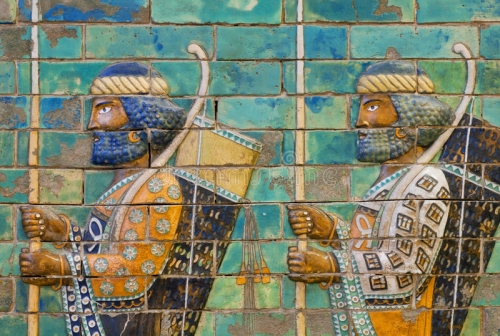
Ten aanzien van Iran betekent dit een heroverweging van het door de systeemmedia en systeemacademia beeld van Iran als vijand. Als handelsland Nederland heeft veel te winnen bij een strikte neutraliteitspolitiek: betrekkingen zouden op basis van reëel eigenbelang moeten worden gemaakt – onafhankelijk van onheuse (want holle en selectieve) criteria als ‘mensenrechten’ en ‘internationaal recht’. Als zulke retorische criteria écht zouden moeten doorklinken in de Nederlandse buitenlandse politiek, dan zouden we moeten beginnen met sancties tegen Amerika en verbreken van diplomatieke betrekkingen met Saoedi-Arabië. Beide zijn natuurlijk geen reële opties en het is belangrijk dat Nederland juist reëel kijkt naar het eigenbelang. Het huidige ‘Calimero’ denken in de Nederlandse politiek – dat Nederland ‘te klein’ en ‘te kwetsbaar’ is voor een autonoom buitenlands beleid, buiten de EU, buiten de Euro, buiten Schengen en buiten de NAVO – is echter evenzeer onzin: Nederland heeft wel degelijk een goede onderhandelingspositie bij een zelfstandig buitenlands beleid: het heeft een bijzonder gunstige strategische positie in het hart van West-Europa, een goede handels- en communicatie infrastructuur, een hoogst inventieve technologiesector, een steenrijke financiële sector, een deels autarkische landbouwsector en een permanente toeristisch aantrekkingskracht. Met een eigen munt, losgekoppeld van woeker- en subsidiepraktijken van de ‘Europese Bank’, een eigen immigratiebeleid, losgekoppeld van de omvolking praktijk van de ‘Schengen Zone’, een eigen rechtssysteem, losgekoppeld van de totalitaire abstracties van het ‘Europese Recht’ en een eigen krijgsmacht, losgekoppeld van de agressief-expansieve ‘NAVO’ is er een wereld aan welvaart, welzijn en (zelf)respect te winnen. Iran is niet de vijand van Nederland – de echte vijand van Nederland is de globalistische elite: die vijand bevindt zich niet duizenden kilometers ver weg aan de Perzische Golf, maar binnen onze eigen grenzen, diep ingevreten in onze instituties.





 del.icio.us
del.icio.us
 Digg
Digg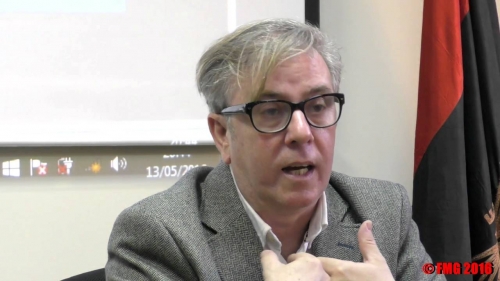
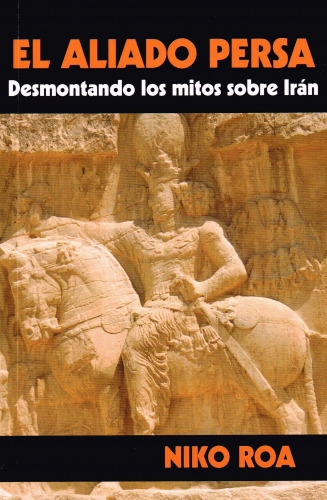

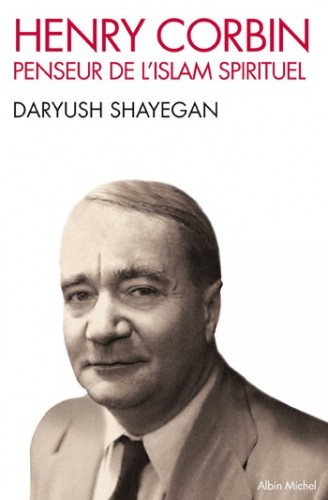 Les années suivantes, jusqu’en 1936, le voient suivre les cours de Massignon, Gilson, Puech, Benveniste, Koyré, à Paris et surtout accomplir plusieurs séjours en Allemagne, à Bonn, Hambourg et Marburg, où il découvrira Swedenborg, « dont l’œuvre immense, dira-t-il, allait ainsi m’accompagner tout au long de ma vie », et où il fera la connaissance de Rudolf Otto, en 1930 : « Comment dire l’éblouissement d’un jeune philosophe débarquant à Marburg au début de juillet 1930 ? L’enchantement des lieux, de cette « colline inspirée » ne vivant que par et pour l’Université, les magnifiques forêts alentour… ». Quelques années plus tard, c’est à Freiburg, durant le printemps 1934, qu’il rendra visite au philosophe Heidegger – qu’il rencontrera à plusieurs reprises ensuite et dont il sera le premier traducteur en France, avec Qu’est-ce que la métaphysique ? en 1939.
Les années suivantes, jusqu’en 1936, le voient suivre les cours de Massignon, Gilson, Puech, Benveniste, Koyré, à Paris et surtout accomplir plusieurs séjours en Allemagne, à Bonn, Hambourg et Marburg, où il découvrira Swedenborg, « dont l’œuvre immense, dira-t-il, allait ainsi m’accompagner tout au long de ma vie », et où il fera la connaissance de Rudolf Otto, en 1930 : « Comment dire l’éblouissement d’un jeune philosophe débarquant à Marburg au début de juillet 1930 ? L’enchantement des lieux, de cette « colline inspirée » ne vivant que par et pour l’Université, les magnifiques forêts alentour… ». Quelques années plus tard, c’est à Freiburg, durant le printemps 1934, qu’il rendra visite au philosophe Heidegger – qu’il rencontrera à plusieurs reprises ensuite et dont il sera le premier traducteur en France, avec Qu’est-ce que la métaphysique ? en 1939. 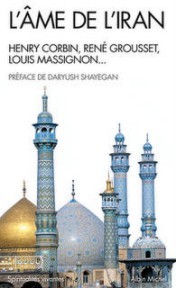 En 1959, paraît son Imagination créatrice dans le soufisme d’Ibn ‘Arabî dont la rédaction fut, selon ses propres termes, « un nouveau point de départ, un moment privilégié dont la clarté illumina la route suivie depuis lors », puis en 1961, grâce à Marie-Madeleine Davy, Terre céleste et corps de résurrection
En 1959, paraît son Imagination créatrice dans le soufisme d’Ibn ‘Arabî dont la rédaction fut, selon ses propres termes, « un nouveau point de départ, un moment privilégié dont la clarté illumina la route suivie depuis lors », puis en 1961, grâce à Marie-Madeleine Davy, Terre céleste et corps de résurrection 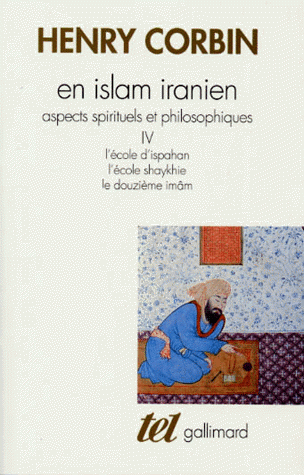 Dans le premier de ces ouvrages, L’Imagination créatrice dans le soufisme d’Ibn ‘Arabî, il dira : « Que l’on entende pas le mot « images » au sens où de nos jours on parle à tort et à travers d’une civilisation de l’image ; il ne s’agit jamais là que d’images restant au niveau des perceptions sensibles, nullement de perceptions visionnaires. Le mundus imaginalis de la théosophie mystique visionnaire est un monde qui n’est plus le monde empirique de la perception sensible, tout en n’étant pas encore le monde de l’intuition intellective des purs intelligibles. Monde entre-deux, monde médian et médiateur, sans lequel tous les événements de l’histoire sacrale et prophétique deviennent de l’irréel, parce que c’est en ce monde-là que ces événements ont lieu, ont leur « lieu ».
Dans le premier de ces ouvrages, L’Imagination créatrice dans le soufisme d’Ibn ‘Arabî, il dira : « Que l’on entende pas le mot « images » au sens où de nos jours on parle à tort et à travers d’une civilisation de l’image ; il ne s’agit jamais là que d’images restant au niveau des perceptions sensibles, nullement de perceptions visionnaires. Le mundus imaginalis de la théosophie mystique visionnaire est un monde qui n’est plus le monde empirique de la perception sensible, tout en n’étant pas encore le monde de l’intuition intellective des purs intelligibles. Monde entre-deux, monde médian et médiateur, sans lequel tous les événements de l’histoire sacrale et prophétique deviennent de l’irréel, parce que c’est en ce monde-là que ces événements ont lieu, ont leur « lieu ».

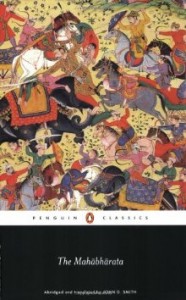
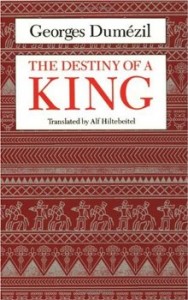
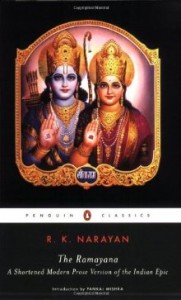
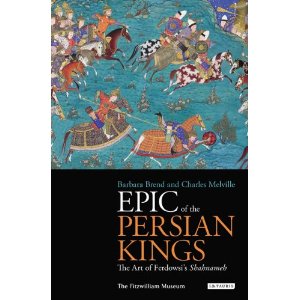
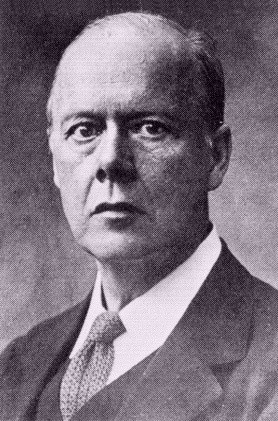

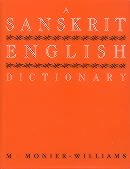

Ex: http://mediabenews.wordpress.com/